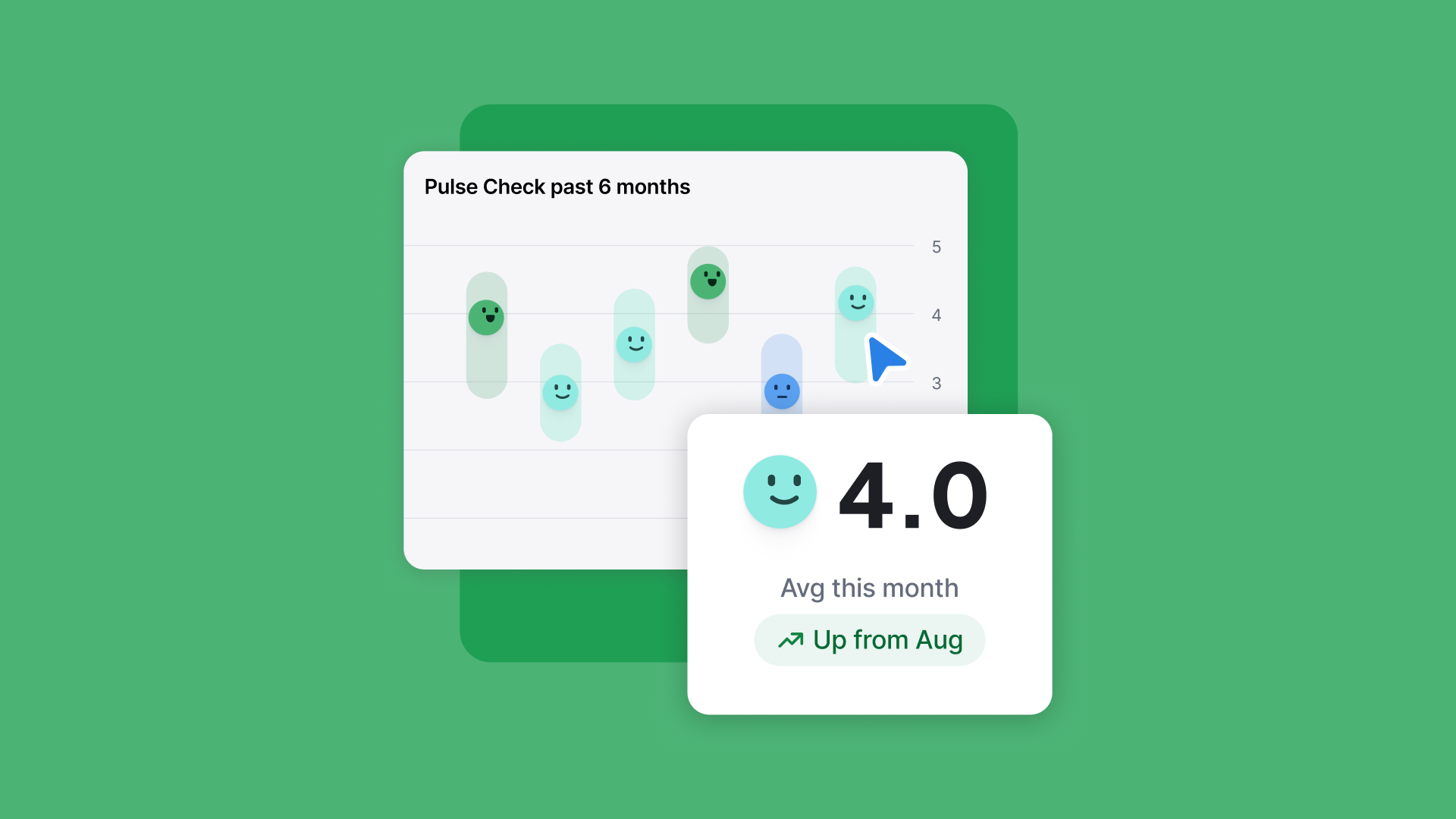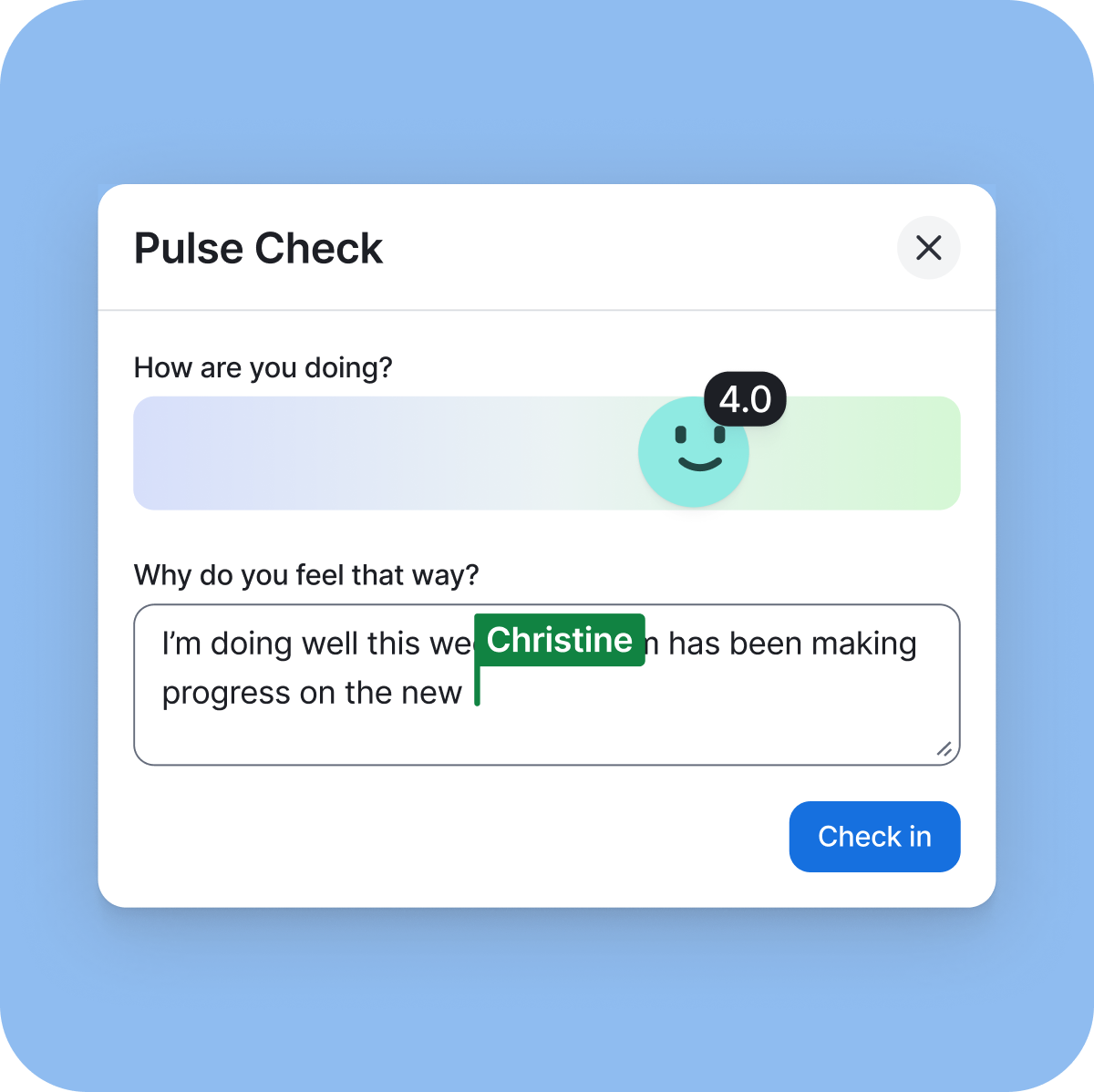Everything You Need to Know About Pulse Surveys

Surveys are everywhere—on receipts, at the end of customer service calls, and in our inboxes after every online purchase. Yet in many workplaces, employees are rarely prompted to share how they actually feel about their work experience.
That’s a missed opportunity. Feedback from employees is one of the most valuable sources of insight an organization has. It’s how companies stay connected, uncover blind spots, and build a culture where people feel heard and supported.
Why you should frequently solicit employee feedback
Your employees are the heart of your organization. When they feel valued, their engagement, motivation, and performance rise. When they don’t, the ripple effects touch every corner of the business, from customer satisfaction to retention rates.
Traditional annual engagement surveys have been the default for decades, but research shows they often fall short. Employees don’t always believe their feedback leads to action, and by the time results are compiled, the moment to make meaningful change has often passed.
That’s where pulse surveys (otherwise known as pulse checks) come in.
What is a pulse survey?
Pulse surveys are short, frequent check-ins designed to capture timely feedback throughout the year. Rather than sending one long, annual survey, you break feedback into smaller, actionable moments that can inform continuous improvement.
Each pulse survey focuses on a specific topic or theme—such as workload, recognition, or engagement—and uses a consistent set of questions to track changes over time. When done well, they offer both a snapshot of how employees are doing and a roadmap for where to focus next.
The key is frequency and follow-through: pulse surveys help you identify trends, take action, and close the feedback loop before challenges grow.

6 best practices for pulse surveys
Let’s discuss some of the best practices you should consider when putting together pulse surveys for your employees.
1. Be clear on your goals
Define what you want to learn and why. If your goal is to understand how employees feel about flexible work policies, tailor your questions to that topic and outline what kind of action you’ll take based on results. Clear intent makes it easier to create meaningful survey questions and ensures that the insights you gather actually drive decisions. Without that focus, even well-designed surveys can produce data that’s interesting but not actionable.
2. Keep it short and sweet
Most pulse surveys can include as little as one question and up to 10 and take just a few minutes to complete. Shorter surveys encourage higher participation and reduce survey fatigue. The value lies in consistency; brief check-ins completed regularly create a more accurate picture of engagement than one long, infrequent survey ever could.
3. Mix up survey question types
Use a blend of question styles—multiple choice, Likert scale, and open-ended—to keep respondents engaged and uncover both quantitative and qualitative insights. Varying question formats also helps you capture richer, more nuanced data. For example, a rating scale might show satisfaction trends, while an open-ended “why” can reveal underlying causes.
4. Ask questions you can act on
Only ask about topics you have the authority to address. Asking for feedback without following up erodes trust. When employees see that feedback leads to change—big or small—it signals that their input matters. This creates a positive feedback loop where participation and honesty both increase over time.
5. Share results and improvements
When employees see that their feedback leads to tangible action, participation and trust increase. Communicate survey results and what you’re doing about them. Transparency shows respect and even when you can’t act on everything, sharing what you learned and why you’re prioritizing certain changes helps build credibility and keeps people engaged in the process.
6 Monitor frequency and participation
Check response rates and adjust your cadence if needed. Quarterly pulse surveys work okay for some organizations, but most teams benefit from shorter, more frequent check-ins. Over-surveying can lead to fatigue, but under-surveying can make employees feel ignored. Experiment to find the right rhythm, and track both participation rates and sentiment trends to gauge what’s working.
How to run a pulse survey
A well-run pulse survey has three key ingredients: intentional design, timely follow-through, and clear communication.
1. Design your survey thoughtfully. Start by identifying what you want to learn—whether it’s employee morale, workload, or team alignment—and choose questions that directly support that goal. Keep them simple and consistent enough to compare over time. For example, asking “How supported do you feel in your current role?” every few months can reveal trends and highlight when team sentiment starts to dip.
2. Choose the right delivery method. Meet employees where they are. With Bonusly's pulse checks, surveys appear directly in the flow of work—through Slack, Microsoft Teams, or the Bonusly feed—so feedback collection feels natural, not disruptive. Making pulse surveys part of everyday communication ensures higher participation and more authentic responses.
3. Communicate purpose and timing. Let employees know why you’re running the survey and how their input will be used. Clear framing increases trust and participation. Send reminders in a friendly, non-pushy way, and always include a closing date so expectations are clear.
4. Review and analyze results quickly. The faster you can review feedback, the faster you can act on it. Look for both quantitative patterns (for example, average satisfaction score) and qualitative insights from comments. Make sure managers can track trends over time, spotting when an employee’s sentiment is trending up or down.
5. Follow up and act. Share key findings and the actions you plan to take. Even if some issues take longer to address, communicating progress builds credibility.
For example, in Bonusly, managers can tie pulse check insights directly into 1:1 conversations, turning feedback into meaningful dialogue and development.
6. Set a consistent cadence. Pulse surveys work best when they’re predictable. Start with a weekly rhythm, then adjust based on team needs and response patterns. Regular check-ins signal that employee experience is an ongoing priority.
How pulse checks work at Bonusly
At Bonusly, pulse checks are built to help managers and employees connect regularly. They are lightweight, in-the-flow check-ins that can be completed directly in Slack, Microsoft Teams, or within the Bonusly app. They provide both quantitative and qualitative signals through two key inputs:
- A simple check-in score that tracks how someone is feeling week-to-week or month-to-month
- An optional “why” field that gives space for context or additional insight
Over time, managers can see how sentiment trends for each team member, spotting improvements, dips, or patterns that may need attention. Pulse checks also appear in the Bonusly 1:1 feed, so feedback from check-ins naturally feeds into regular conversations and performance recaps.
This ongoing connection helps employees feel seen and supported while giving managers real-time visibility into team morale. Bonus points: no spreadsheets or delayed reports required.

The takeaway
Pulse surveys are a powerful way to create a more connected, responsive workplace. By giving employees a regular voice and turning feedback into action, you build trust and help every team thrive.







